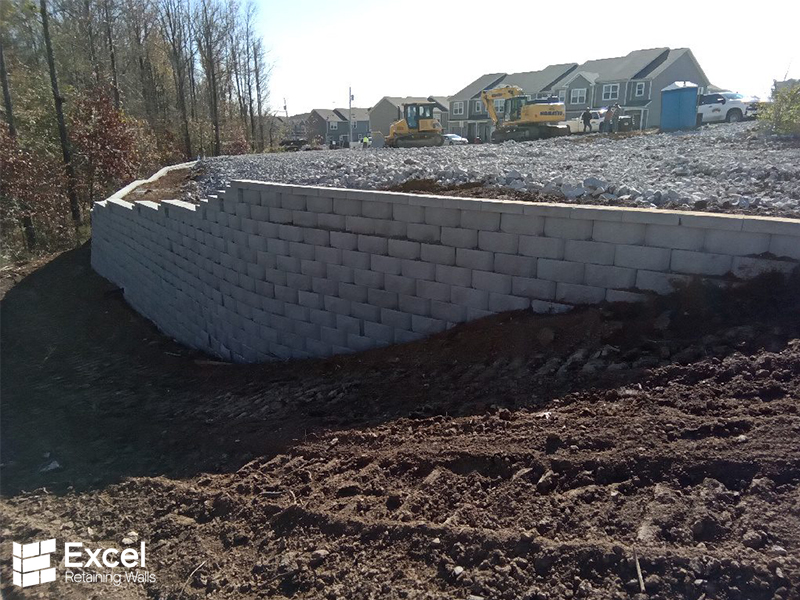Retaining walls are a crucial component of many construction projects, providing a wide range of benefits to the surrounding environment and structures. Retaining walls are often used to stabilize the soil on sloping terrain, prevent erosion, and manage water flow, and they are often designed to add an aesthetic appeal to the site while providing a practical function. Here’s a breakdown of some core topics that will help with your next construction project:
- Retaining Wall Stability
- Aesthetic Appeal
- Creation of Usable Space
- Providing Privacy
- Proper Drainage
- General Maintenance

Stability and Aesthetic Appeal
One of the primary benefits of retaining walls in construction is their ability to provide stability to the soil on sloping terrain. When building on a slope, retaining walls are used to hold back the soil and prevent it from sliding down the hill, which can cause erosion, structural instability, and even landslides. Retaining walls are often used in commercial and industrial construction projects to provide stability to the surrounding environment, ensuring that the site remains safe and secure.
In addition to providing stability, retaining walls can also be designed to add an aesthetic appeal to the site. Retaining walls are available in a variety of materials, including concrete, brick, stone, and wood, and can be designed to complement the existing architecture and landscape. Retaining walls can also be used to create terraced gardens or other features that provide additional space for landscaping and recreational activities.
Water Flow Management with Retaining Walls
Retaining walls also provide a practical solution for managing water flow. In areas with heavy rainfall or where water runoff is a concern, retaining walls can be designed to direct the flow of water away from structures and prevent water from pooling on the site. This can help to prevent soil erosion, structural damage, and other issues associated with water buildup.
Creating Usable Space and Privacy
One of the most significant benefits of retaining walls in construction is their ability to create usable space. When constructing on sloping terrain, retaining walls can be used to level the site, creating additional space for buildings, parking lots, or other features. Retaining walls can also be used to create elevated gardens or terraces, providing an attractive and functional addition to the site.
Retaining walls can also be used to provide additional privacy to the site. When designed and constructed correctly, retaining walls can create a barrier between the property and surrounding areas, creating a more secluded and private environment for residents or workers. This can be particularly useful in commercial or industrial settings, where privacy and security are often top priorities.
Proper Drainage and Maintenance
In addition to the design and construction of the retaining wall itself, proper drainage is critical. Poor drainage can cause water to build up behind the retaining wall, causing it to fail. An experienced contractor will be able to evaluate the drainage needs of the site and ensure that the retaining wall is designed to accommodate them.
When it comes to maintaining a retaining wall, regular inspection and upkeep are essential. Over time, retaining walls can develop cracks or other damage that can compromise their structural integrity. Regular inspection and maintenance can help to identify any issues early on and prevent them from becoming more significant problems down the line.
Experience Matters – Partner with Excel Walls for your Next Project
When constructing retaining walls, it’s essential to work with an experienced and knowledgeable contractor. The design and construction of retaining walls require careful consideration of factors such as soil type, slope of the land, and water drainage. Excel Walls is able to evaluate your project’s site and develop a retaining wall design that meets the specific needs of the construction project.
In conclusion, retaining walls are a valuable component of many construction projects, providing stability, preventing erosion, managing water flow, creating usable space, and adding an aesthetic appeal to the site. When designing and constructing retaining walls, it’s crucial to work with an experienced contractor who can evaluate the site’s unique needs and develop a plan that meets those needs. Regular inspection and maintenance are also essential to ensure that the retaining wall remains safe and functional over time. With their numerous benefits and practical uses, retaining walls are a valuable addition to any construction project!

